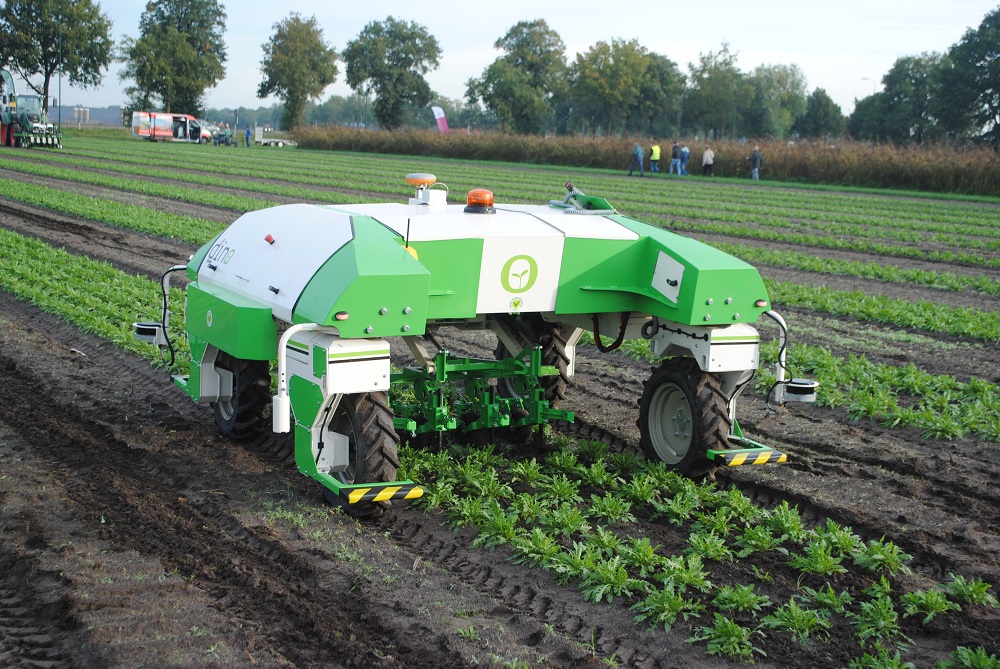The three-row Dino weeding robot from Naïo Technologies has no problem hoeing between the arugula plants on a test field in Zeeland, Brabant. At the same time as the growth in possibilities, the purchase of a robot is also becoming more interesting from a cost point of view. With the investment of around one hundred thousand euros, the hoeing work can be carried out autonomously. “And with crop recognition, the step to site-specific spraying is also small.”
Steps to hoeing lettuce, onions and green beans with the weeding robot
Product manager Thijs van de Ven of Abemec talks enthusiastically about the self-driving Dino and the development possibilities of the robot. The application is becoming more and more mature due to the combination with Garford’s hoe and associated camera techniques, which has recently been imported into the Netherlands by Homburg. “The Dino is now used for hoeing lettuce. The working width is 160 to 200 centimeters ”, says Van de Ven.“ With the new camera we will soon be making the step to onions and green beans. ”
Steps to hoeing lettuce, onions and green beans with the weeding robot
Product manager Thijs van de Ven of Abemec talks enthusiastically about the self-driving Dino and the development possibilities of the robot. The application is becoming more and more mature due to the combination with Garford’s hoe and associated camera techniques, which has recently been imported into the Netherlands by Homburg. “The Dino is now used for hoeing lettuce. The working width is 160 to 200 centimeters ”, says Van de Ven.“ With the new camera we will soon be making the step to onions and green beans. ”
“I dare to let the Dino drive alone on every plot”
It is currently not yet allowed to let the robot do its work without supervision. “Really a legal thing. In a field with a fence or a wide ditch around it, it is safe and allowed. I dare to let the Dino drive alone on each plot ”, says Van de Ven.“ We introduce the AB points and the robot sticks to them. If there is a deviation of four meters, a message is sent to my phone. If something comes within two meters of the Dino, the hazard lights and warning tones go on.
GPS coordination
Van de Ven and his colleagues set the GPS coordinates for the trial. In fact, the robot can work fully electrically for eight hours, with which three to five hectares of hoeing work is feasible at a speed of approximately four kilometers per hour. In practice, the Dion shows that it can turn perfectly on four wheels and can always reach the full working width on the right line. With the techniques of Garford under the Dino, another step can be taken in the field of InRow hoeing. This brings the costs for the robot to 130,000 to 140,000 euros. The weeding robot in its current form, all inclusive, costs about one hundred thousand euros. “Then you just have to make the calculation yourself.”


